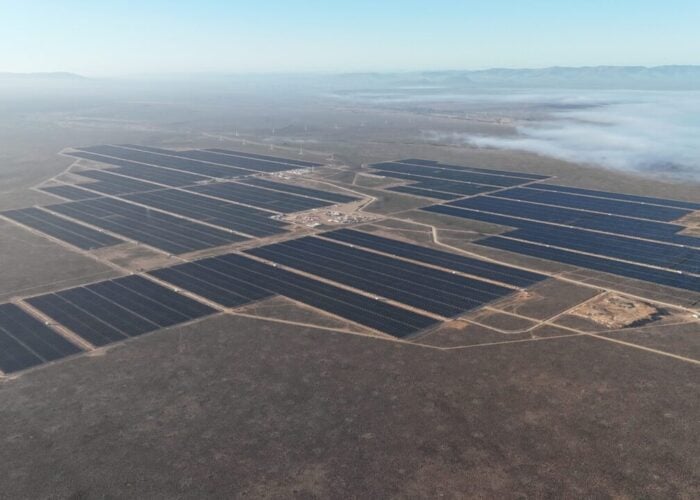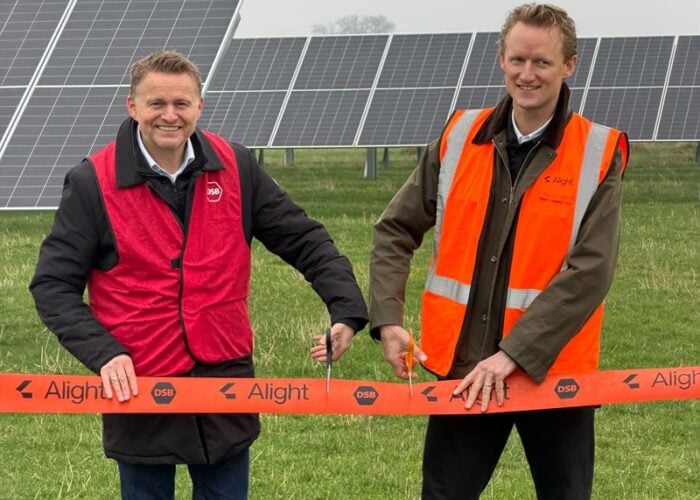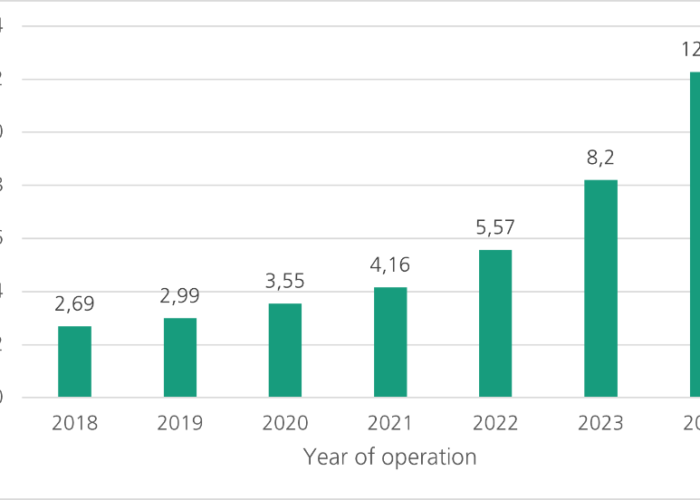
The world invested US$554 billion into solar PV projects in 2024, leading renewable electricity generation sources, but significantly more capital across technology types will be needed to limit global warming to 1.5 degrees Celsius by 2050.
These are some of the conclusions to be drawn from ‘Global Landscape of Energy Transition Finance 2025’, the latest report from the International Renewable Energy Agency (IRENA) and the Climate Policy Initiative (CPI), published this week. The report notes that 2024 saw a record total of renewable energy investments, totally US$2.4 trillion, an increase over the US$2.2 trillion invested in 2023.
Try Premium for just $1
- Full premium access for the first month at only $1
- Converts to an annual rate after 30 days unless cancelled
- Cancel anytime during the trial period
Premium Benefits
- Expert industry analysis and interviews
- Digital access to PV Tech Power journal
- Exclusive event discounts
Or get the full Premium subscription right away
Or continue reading this article for free
These are the only two years on record where global renewable energy investments exceeded US$2 trillion. The world has invested at least US$500 billion in renewable energy as a whole each year since 2021. Solar PV led all renewable energy technologies in terms of investments in 2024, with US$554 billion invested in 2024, an increase of 49% over the previous year. Aside from a US$763 billion investment into electric vehicles (EVs), this was the largest investment by technology type, as shown in the graph below.
In addition to the substantial investment in solar PV, the technology experienced a greater year-on-year increase in capital commitments than almost all other technology types. Solar thermal and wind both saw a year-on-year decrease in investment, 32% and 10.5% respectively, while year-on-year increases in EVs, EV charging infrastructure and power grids, of 33%, 27% and 14% respectively, are all lower than in PV.
The only exception was battery energy storage systems (BESS), which saw a 73% year-over-year increase in investments; however, the total investment in this space—US$54 billion—remains significantly lower than in solar PV.
According to the IRENA-CPI report, the world invested US$1.185 trillion in renewables in 2024, a record figure, compared to US$1.126 trillion in fossil fuels. Over the last decade, the difference in investment trends has been stark: fossil fuel investments have declined slightly, from US$1.375 trillion in 2015, while renewable energy investments have more than tripled from US$376 billion over this period.
US$1.4 trillion needed in annual investments
However, the report also notes that current investment will not be sufficient to meet the world’s climate change goals, most notably the IRENA 1.5 degrees Celsius scenario. This outlines the investment required by 2030 to limit global warming to 1.5 degrees Celsius by 2050.
According to the report, annual investment in renewable power generation alone must almost double from currently levels to around US$1.4 trillion each year between 2025 and 2030. Energy efficiency improvements are the area that requires the most additional capital, with the report noting that the world will need to increase investments in energy efficiency by 7.5 times by the end of the decade. This need, alongside that of other energy transition technologies, is illustrated in the graph below.
It is worth noting that this graph presents the less optimistic scenario from the IRENA-CPI figures; current renewable power investments are described from a range of US$624-773 billion, with total capital needed across a range of US$1,438-1,781 billion, based on current operational capacity versus projects for which a final investment decision has been reached, but the project has not yet begun operations.
However, the trend is clear, with additional capital necessary across a number of sectors. While solar PV is in a relatively strong position as one of the most mature technologies—requiring just 1.2 times the investment by the end of the decade—other technologies require more growth in investments. Offshore wind and bioenergy, for instance, require eight and six times more money, respectively, while solar thermal and geothermal power required 32 and 29 times more investment, respectively, the most among all technologies.
Indeed, while 2024 was a record year for clean energy investments in terms of sheer capital deployed, the rate of growth in investment from one year to the next paints a less optimistic picture. As shown in the graph below, the rate of growth in investment between 2023 and 2024 was just 7.3%, much lower than the record 32% year-on-year-growth reported between 2022 and 2023, suggesting that appetite for new clean energy investments is slowing down.
This has been reflected in investment trends seen across the clean energy space, with policy uncertainty, and greater isolationism among leading countries in the renewable energy sector, in particular undermining what had been a strong business case for more renewable energy investments in previous years. Earlier this year, figures from GOGLA, the global association for the off-grid solar energy industry, revealed a 30% year-on-year decline in investment in off-grid solar PV, and while this is an extreme example, this speaks to growing investor reticence to commit large quantities of capital to parts of the renewable energy sector.
Reliance on private investment is ‘leaving developing countries behind’
This phenomenon is made more influential by the fact that private financiers account for the majority of clean energy investments. According to the IRENA-CPI report, corporations and commercial financial institutions accounted for 40% and 38% of all renewable energy investments, driving increasing reliance on private capital for the energy transition.
The report notes that, between 2017/18 and 2022/23, the world’s “advanced economies” saw the proportion of clean energy investment stemming from private finance increase from 85% to 87%. Indeed, in 2022/23, only China and “least-developed countries” (LDCs) saw a greater proportion of clean energy finance come from public sources than private sources, 64% and 59%, respectively.
“IRENA has long called for smarter use of public funds to unlock private investment through risk-mitigation tools,” said IRENA director-general Francesco La Camera. “Yet the heavy reliance on profit-driven capital is leaving developing countries behind. Where private finance won’t flow, the public sector must lead, backed by stronger multilateral and bilateral cooperation and scaled-up climate finance.”
The report also notes that clean energy supply chain investments are significantly imbalanced, with China accounting for 76% of investments into clean energy supply chains in 2024. While China’s manufacturing downturn has been a well-discussed topic in the solar industry this year, China still dominates global production of, and investment in, many of the technologies and components required for the energy transition, creating an imbalanced global supply chain.






